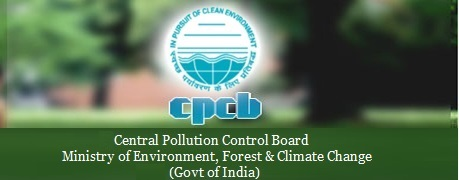The Central Pollution Control Board (CPCB) of India is an organisation under the Government of India responsible for Air and Water Quality Monitoring Services and any other pollution-related issues. Climate change is an important topic for Current Affairs and Environment & Ecology for IAS Exam.
Central Pollution Control Board (CPCB) is one of the important government bodies. It can be related to Polity and Governance from General Studies paper-2 and Environment & Ecology from General Studies paper-3 of the UPSC Syllabus.
Central Pollution Control Board CPCB – Latest updates
- CPCB recently celebrated its 46th Foundation Day. The government organized a webinar in September 2020 to commemorate the anniversary of CPCB.
- According to the Central Pollution Control Board, there are 128 sites in India contaminated by toxic and hazardous substances. West Bengal led the list with 27 sites followed by Odisha at 23. Some incidents of Contamination are –
- Pesticide and heavy metal contamination in creeks at Eloor, Kerala.
- Mercury contamination of the soil at Kodaikanal, Tamil Nadu, and Ganjam, Odisha.
- Oil contamination due to leakage of underground oil pipelines of Bharat Petroleum Corporation Limited in Tamil Nadu.
- Improperly disposed electronic waste lying on the banks of river Ramganga, Moradabad.
- Chromium contamination at Rania, Ranipet, Tamil Nadu, and Lohianagar, Uttar Pradesh.
There are similar topics important from the environment and ecology point of view. Complement your reading about CPCB with these topics:
| Stubble Burning | Environment Conventions and Protocols |
| Air Quality Index | System of Air Quality and Weather Forecasting And Research (SAFAR) |

| Aspirants can check the following links to align their preparation for UPSC 2022 examination: |
What is CPCB?
- The Central Pollution Control Board (CPCB) of India is a statutory organisation under the Ministry of Environment, Forests and Climate Change. (Know the difference between the statutory and quasi-judicial body in the linked article.)
- Established in 1974 under the Water (Prevention and Control of Pollution) Act and later entrusted with functions and responsibilities under the Air (Prevention and Control of Pollution) Act, 1981.
- Water Pollution:
- Water pollution can be defined as the contamination of water bodies. Water pollution is caused when water bodies such as rivers, lakes, oceans, groundwater, and aquifers get contaminated with industrial and agricultural effluents.
- Air Pollution:
- Air pollution refers to any physical, chemical or biological change in the air. It is the contamination of air by harmful gases, dust and smoke which affects plants, animals, and humans drastically. Click here to read about Air Pollutants.
- Water Pollution:
- It coordinates the activities of the State Pollution Control Boards by providing technical assistance and guidance and also resolves disputes among them.
Read about Smog as a type of intense air pollution to add more value to your answers concerning air pollution.
Aspirants can also check the following links to prepare well for the upcoming Civil Services examination –
CPCB Organisational Structure
CPCB is led by its Chairman followed by the Member Secretary, and other members. The CPCB performs its various functions through the following nine major project budget heads.
- Pollution assessment (survey and monitoring).
- R&D and laboratory management.
- Development of standards and guidelines for industry-specific emissions and effluent standards
- Training
- Information database management and library
- Pollution control technology
- Pollution control enforcement
- Mass awareness and publications
- Hazard waste management
Powers and Functions of CPCB
- Advising the Central and State Government on matters related to prevention, improvement and control of Air and Water pollution.
- Planning various programs to control and prevent Air & Water pollution
- Planning and organising training programs for people involved in activities for the prevention, improvement and control of Air and Water pollution.
- Collecting, compiling, and publishing statistical and technical reports related to Air & Water Pollution. These reports are used to develop preventive measures to control and reduce pollution.
- Preparing manuals, codes and guidelines relating to treatment and disposal of sewage and trade effluents as well as for stack gas cleaning devices, stacks and ducts.
To know what are the Pollution Measurements adopted by the CPCB visit the linked article.
Air Quality Monitoring
- To monitor the ambient air quality, CPCB launched a nationwide programme called National Air Quality Monitoring Programme (NAMP).
NAMP
|
Water Quality Monitoring
- Fresh water is a limited resource and is essential for human existence and their activities.
- India is a riverine country. It has 14 major rivers, 44 medium rivers and 55 minor rivers besides numerous lakes, ponds and wells which are used as primary source of drinking water even without treatment.
- One of the important function of CPCB is to collect, collate and disseminate technical and statistical data relating to water pollution. Also, collaborate with various stakeholders to control water pollution.
National Water Quality Monitoring Programme (NWMP)
|
Read about other important bodies set up for environment conservation in India from the links below:
Central Pollution Control Board – UPSC Notes:- Download PDF Here
UPSC Preparation:
Comments